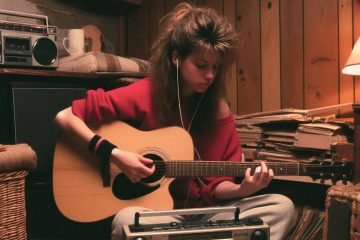Song writing tips 101: A bad arrangement will sabotage your song and rob it of the right energy.
No not some mystic energy – the perceived energy of the track. The rise and fall, the build up and the releases etc. all the things that make your favourite songs just sound right. (This is discussed at length in Friedemann Findeisen’s book “The Addiction Formula” which is definitely recommended for you song writing reading list)
What is Musical Arranging?
Arranging music is simply the skill of transforming your composition, your song, into a more complex piece of music. This involves deciding which instruments will be recorded, what they will play and how they all fit together.
Traditionally arrangers were thoroughly specialised. They would specifically work to adapt songs for different ensembles such as writing string parts, horn parts and even adapting whole songs for orchestras.
(I love Post Modern Jukebox’s jazz takes on popular songs. Scott Bradlee is an exceptional arranger in the true sense of the word).
It’s true that not all songwriters need to be arrangers but my guess is that most people reading this are recording musicians. You are probably already producing, recording and arranging your music as well as writing it. If that’s not you, it’s still valuable to understand more about the process and skills involved.
Song Writing: Same Same But Different
Before we dive in to these song writing tips I think it’s important to remember that songwriting and arranging are two distinct skills and processes. There is crossover at times where new parts are written in the arranging process. (The same can be said for music production and arranging)
This is especially so in “track and hook” style writing. If you’re a beat maker and you’re reading this, everything still applies, you’re just writing an instrumental composition before the main melody is written. This has been happening for well before DAW users started making beats for singers to topline on. But it is important to recognise when you’re writing and when you’re arranging as you’ll see.
How Should I Arrange My Song?
The short answer is arrange it so it fits together well, supports the energy curve of the song and keeps people interested.
Let’s break that down.
Fits Together Well
This is about choosing sounds that work together tonally and what they play doesn’t get in the way of the other sounds.
Some tones are classic and arranging them can be somewhat more straightforward. Ensembles like choirs, string quartets, orchestras and a four piece rock band follow certain arrangement patterns that have been developed over the years.
The instrumentation is set and this dictates the frequency ranges of the instruments. This helps you by giving you a palette of sounds to arrange so the parts each instrument plays doesn’t get in the way of the other part. You can then focus on the main goal of supporting the energy curve of the song.
When you’re dealing with electronic sounds it can be a little more challenging because you’re dealing with synthetic sounds that don’t have traditional tone colours. This is where referring back to classic ensembles archetypes described above can help guide you.
By trying to identify the role of the instrument and where that fits into a traditional arrangement archetype you can map these new tone colours to traditional arrangement techniques and quickly work out why something isn’t working.
Supports The Energy Of The Song
What is this energy? It’s really a play on more traditional concepts of tension and release. It is a slightly more modern way of expressing the flow of a song which creates interest and makes sense to the listener.
A good balance of tension and release or the correct energy is why we love our favourite songs when they hit the chorus and we get the satisfaction of the release from pre chorus to chorus or verse to chorus. Arrangement plays a major part in controlling this energy.
Simple things like adding more instruments in the chorus will automatically up the energy. Changing the rhythm of a part from longer held notes to shorter held notes will increase energy. In the same way dropping instruments out as you come into the next verse will bring that energy back down which helps to create interest and takes people on a journey.
Keeps People Interested
In the same way that a movie has ebb and flow of the story over the course of the whole movie or TV dramas. Those patterns are comfortable and expected by us. We enjoy the journey of the song and the changes in energy. The pay-offs of choruses etc. So getting this right is important if you want to create music that people don’t ignore.
Song Writing Tips: Your Song Arrangement Checklist:
- How many instruments are there? Do they play at the same time all the way throughout the song? This will reduce contrast and variation which can take away from the impact of different sections. Try removing instruments or simplifying their parts in low energy sections and vice versa for high energy sections. Experiment.
- Is the spread of frequencies in the instruments from bass to treble manipulated to effect the energy of the track? Darker sounds subdue the energy whereas brighter sounds which cut through raise the energy levels. Think of quiet held piano chords in the lower register with the mute on VS a searing electric guitar solo from an amp turned up to 11.
- When thinking about arranging the song visualise the instruments and sounds in your mind that make up the track. (We’ll be dicussing this in more detail when talking about music production) Always think about controlling the energy of the track. Sketch it out on paper even. Having a map like this helps you in times of confusion or frustration.
- Always ask, is this instrument or part here for a reason? Don’t just let it play for the sake of it. This is espectially true of rock band type ensembles where the arranging happens in a “jam” type setting. It’s a lot of fun when you’re jamming it but when you record it the results may vary.
- Before adding another instrument, could the part that this instrument is playing be adjusted so you don’t have to add another instrument? This forces creativity and experimentation which will improve your songwriting and releases.
- How do instruments overlap frequency wise? Are they getting in the way of each other? Could one of them play a different part or in a different register to get out of the way? This helps A LOT when mixing and will make your releases seem much more polished.
Of course there is much more were could discuss about arranging so I’ve included some additional resources below. Arranging your songs as a part of your pre-production for recording will make a big difference in the release you end up with.
Now we’ve arranged our song so it sounds 🔥 we’re ready to start recording it. This is the next part of our song writing tips journey that will help you write songs that won’t get ignored and turn into a Spotify skip.
Song Arrangement Resources:
- Arranging Music: 8 Mistakes You Need To Avoid
- Arranging for Songwriters: What Parts or Instruments are Right for the Song? A quick video about not letting emotions dictate your arranging decisions (amongst other things).
- 7 Modern Arranging Techniques A fun look at arranging which makes you appreciate the fun you can have.
If you have any other arrangement resources please post them in the comments.
Photo by Debby Hudson



0 Comments